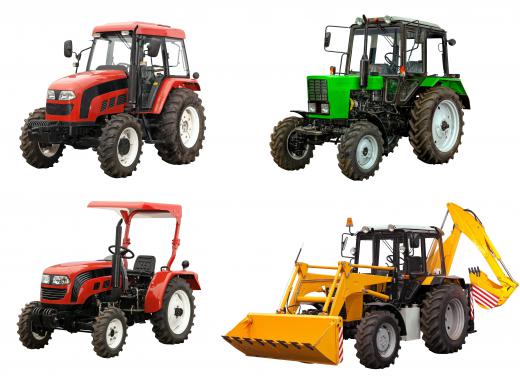Wheel loaders are a type of heavy machinery used in construction, as well as for many other non construction tasks. They have sturdy tires equipped with large, rugged treads that allow for optimum maneuverability. Common types include mini, small, large and super wheel loaders; skid steers; front loaders and backhoe loaders.
This type of machinery is a variation on the tractor and is designed for more laborious work. The biggest difference between the two can be seen in their steering systems. Most wheel loaders' steering systems use a hydraulically actuated pivot point, which allows the front and rear axle to bear more weight than automotive steering systems.

Wheel loaders have a square bucket, called the loader, which is maneuvered by flexible arms. The loader is either a permanent fixture or an attachment secured to either the front or back of the machine. Some varieties, such as a backhoe loader, have a bucket in the front and a backhoe in the rear. This kind of machine is able to dig with the backhoe and remove the unearthed material with the loader.
There are four general tasks that these machines can perform: scooping, digging, dumping and carrying. They are commonly used for carrying construction materials like bricks, pipes and rock, and are also good for snow removal in commercial areas. Most farms use various types of loaders for many reasons, including scooping and transporting hay and excavating the land. Small ones can be used inside buildings.
Wheel loaders have an advantage over track loaders, because they are easier on paved roads and other sensitive environments. Track loaders are more suited to tasks that involve digging, however, because vehicles with wheels are unable to dig much below the tires without getting stuck. When a task involves transport or shallow excavation, a wheel loader is less destructive and therefore more efficient in the long term.
